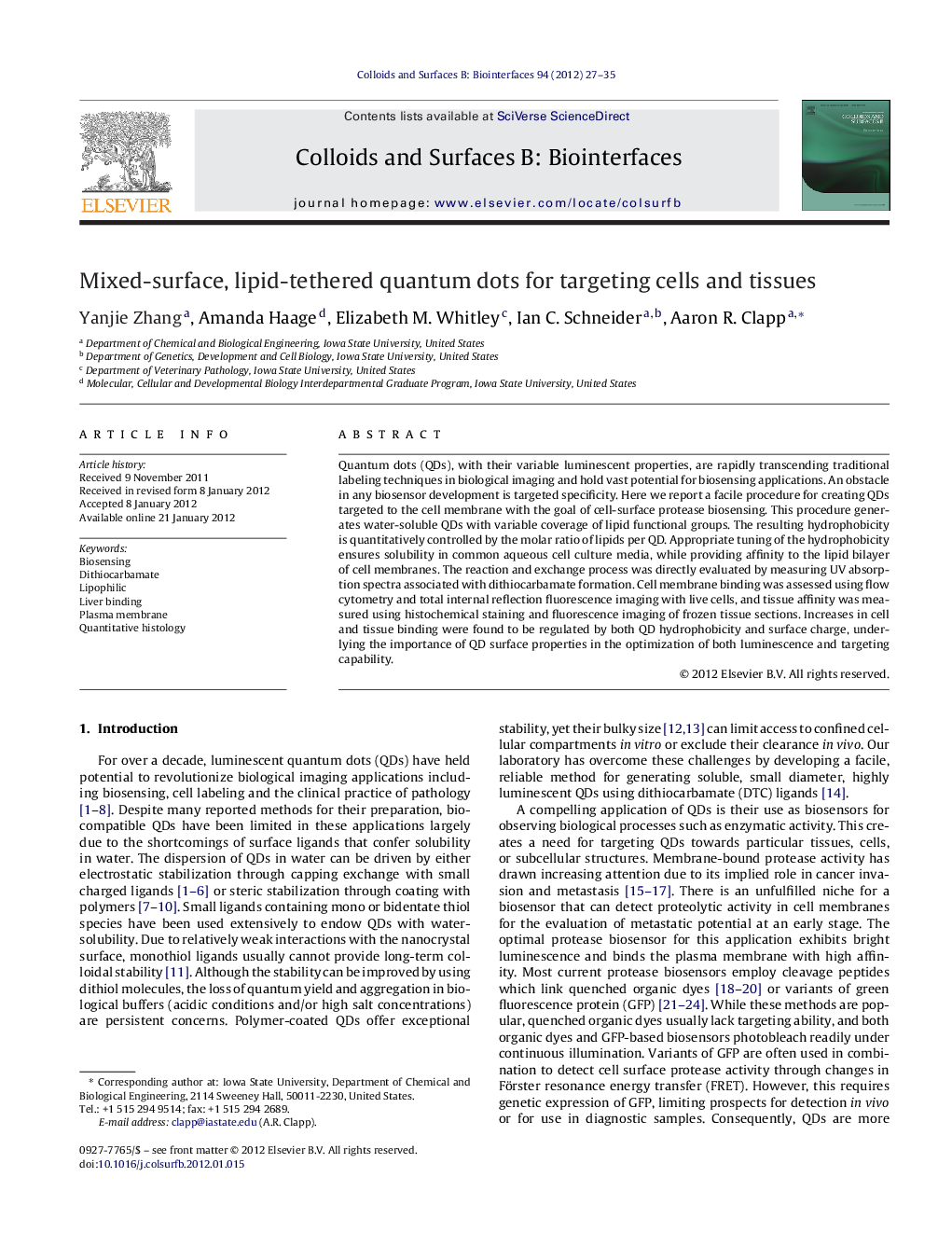| کد مقاله | کد نشریه | سال انتشار | مقاله انگلیسی | نسخه تمام متن |
|---|---|---|---|---|
| 600828 | 1454310 | 2012 | 9 صفحه PDF | دانلود رایگان |

Quantum dots (QDs), with their variable luminescent properties, are rapidly transcending traditional labeling techniques in biological imaging and hold vast potential for biosensing applications. An obstacle in any biosensor development is targeted specificity. Here we report a facile procedure for creating QDs targeted to the cell membrane with the goal of cell-surface protease biosensing. This procedure generates water-soluble QDs with variable coverage of lipid functional groups. The resulting hydrophobicity is quantitatively controlled by the molar ratio of lipids per QD. Appropriate tuning of the hydrophobicity ensures solubility in common aqueous cell culture media, while providing affinity to the lipid bilayer of cell membranes. The reaction and exchange process was directly evaluated by measuring UV absorption spectra associated with dithiocarbamate formation. Cell membrane binding was assessed using flow cytometry and total internal reflection fluorescence imaging with live cells, and tissue affinity was measured using histochemical staining and fluorescence imaging of frozen tissue sections. Increases in cell and tissue binding were found to be regulated by both QD hydrophobicity and surface charge, underlying the importance of QD surface properties in the optimization of both luminescence and targeting capability.
Figure optionsDownload as PowerPoint slideHighlights
► QDs with various charged surfaces and functionalized with lipids retain aqueous solubility.
► Lipid-functionalized QDs show enhanced cell-binding that depends on QD surface charge.
► Cell-binding properties of QDs precisely predict liver tissue binding properties.
► Lipid-functionalized QDs bind liver tissue, marking anatomical structures.
Journal: Colloids and Surfaces B: Biointerfaces - Volume 94, 1 June 2012, Pages 27–35